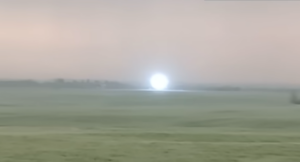Sometimes it seems like we’re running out of wild spaces on this little blue marble. So it might come as a shock to learn that around half our planet has “low” human impact.
That’s the status according to a paper published in the journal Global Change Biology and reported on by National Geographic. Even more surprising, the paper and its accompanying maps deem that a quarter of the Earth’s ice-free surface exhibits “very low” human impact.
“If you want to know where in the world you can find a place that has not yet been transformed by [people, this map] is where to find it,” Erle Ellis, a global ecologist at the University of Maryland told National Geographic.

The green areas on map (a) have the least human impact, while those on map (b) have relatively low human impact. The maps combine four yardsticks — anthromes (where humans live), human footprint, low-impact areas, and human modification. Northern forests, tundra, desert, and montane grasslands are least affected, while temperate grasslands, tropical coniferous forests, and tropical dry forests suffer the most impact. Map: Jason Riggio, et al.
Unpacking the map
The map uses four different metrics to maximize accuracy. The Anthropogenic Biomes show those regions where people actually live. At the same time, the Global Human Modification and Low Impact Areas depict spots with few or no people.
Finally, the Global Human Footprint index uses navigable waterways, railways, roads, and nighttime lights to see where humanity clusters.
When the researchers behind these different metrics combined their findings, they ended up with a tool that accurately determines which places humans have most affected. Perhaps unsurprisingly, deserts, boreal forests, montane grasslands, and tundra all have the least human impact.
“More concerning,” the paper’s authors write, “<1% of temperate grasslands, tropical coniferous forests, and tropical dry forests have very low human influence…Tropical grasslands, mangroves, and montane grasslands also have <1% of land identified as very low influence.”

A Venn diagram showcases how the four models determined “human impact.” Diagram: Jason Riggio, et al.
Casually glancing over the map might create questions. For instance, astute history students know that native people in “very low” impact areas have interacted with their environments for thousands of years. And what about the Amazon? Aren’t we impacting that in major ways?
The answer to the first question is that while it’s true that native people in North America — to choose one example — routinely set fire to their lands to better manage the animals they hunted, that definition of “impact” doesn’t match the more modern approach taken by the paper’s authors (see diagram, above).
Regarding the Amazon and similar ecosystems, the answer is yes, we are making dramatic impacts in those fragile places. But not when compared to what we’ve already done in other areas.
“These findings suggest that about half of Earth’s terrestrial surface has relatively low human influence and offers opportunities for proactive conservation,” the paper’s authors wrote. “Conserving these last intact areas should be a high priority before they are completely lost.”






